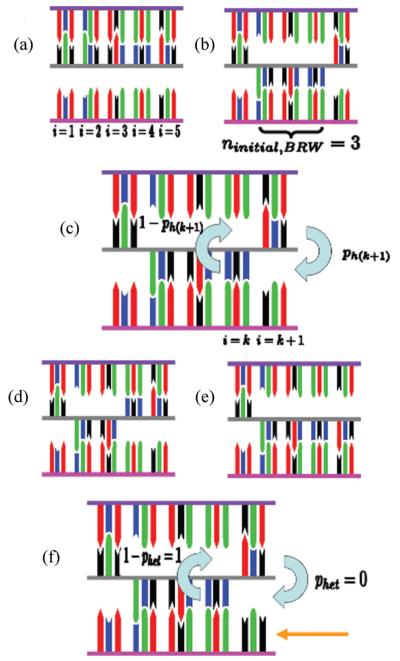FIG. 1.
(Color) Schematic of the random walk. (a) Initial searching filament and dsDNA bound to the ssDNA-RecA filament in the initial sequence independent state. Outgoing, complementary, and incoming strand backbones are shown in purple, gray, and pink, respectively. Individual bp are shown as green, red, black, and blue rectangles. All of the bp in the dsDNA composed of the outgoing and complementary strands are correctly paired. The bases in the incoming ssDNA are completely unpaired. (b) Initial distribution in the metastable poststrand exchange state after the first checkpoint is passed. (c) Transition probabilities for a homolog for increasing (p) or decreasing (1 − p) the number of triplets in the metastable poststrand exchanged state. The subscript function h(i + 1) is used to emphasize that p is a function of the sequence matching of the (i + 1)th triplet. If the (i + 1)th triplet is homologous, ph(i + 1) = phom; otherwise ph(i + 1) = phet. (d) State distribution after reverse strand exchange of one triplet which changes nbound from 3 to 2. (e) State distribution after an additional triplet is strand exchanged which changes nbound from 3 to 4. (f) Transition probabilities when the neighboring unbound triplet is a nonhomolog, where the orange arrow indicates the nonhomolog.

